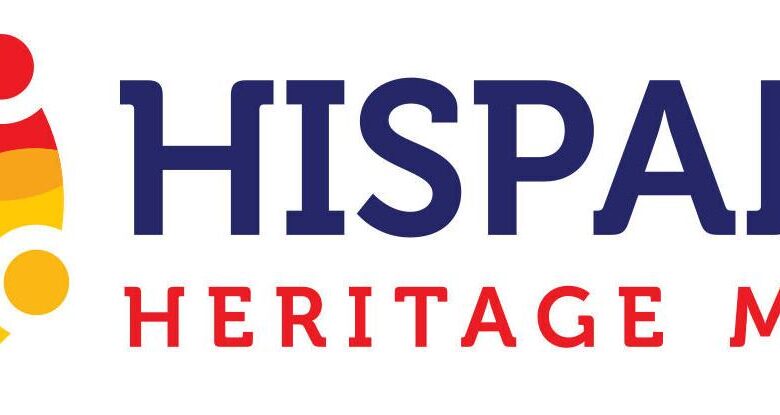Idaho has 8th-highest growth among all states in Latino wealth

A few years ago, Ana Valdez was invited to speak to the Wisconsin Chamber of Commerce.
She was delighted, accepted the invitation and, eventually, took her opportunity in front of a crowd to share the vision of the Latino Donor Collaborative and just a few of the facts and figures uncovered by a nonprofit organization in its infancy.
“When I finished the speech, I was actually able to stay and they sat me with the governor and I remember telling him, ‘Governor, thank you so much for having me — but, tell me, why me?’” Valdez told the Times-News during a telephone interview on Friday.
The answer? “He said, ‘Your statistics are needed. We need to teach our people who Latinos are, because we don’t know who Latinos are,’” recounted Valdez, the group’s president and CEO.
The mission of the LDC is to change that — and the group’s latest report, produced in partnership with Wells Fargo and released this week in the heart of Hispanic Heritage Month, put a spotlight on Idaho’s rise among the top 10 states for Latino wealth growth and reinforced the group’s thesis that Latino consumers and entrepreneurs will push the United States ahead through the 21st century.
People are also reading…
Among the LDC’s findings, Idaho ranked No. 8 nationally for Latino growth between 2011 and 2021 and U.S. Latinos, as a total, would account for the world’s fifth-largest economy if they were their own country — surpassing India, the United Kingdom and France.

Ana Valdez
It was where Latinos made the greatest strides that surprised even Valdez.
“We used to think of Latinos in the traditional states — California, Texas, Florida, New York, Illinois — but Latinos are actually now going everywhere,” she said. “And the biggest growth that we’re seeing is in states like Idaho but also the ones you least expect: South Dakota, North Dakota, Minnesota.”
Valdez laughed and added, “Naturally, it’s not exactly the place you would go if you were a Latino — in Minnesota. It’s so interesting, right? With the weather. But they’re going.”
The Dakotas ranked first and second for highest growth of Latino wealth in the last 10 years, leading what the 2023 LDS U.S. Latino GDP Report called a “silent revolution” in smaller U.S. state economies.
“South Dakota, typically celebrated for its breathtaking national parks and rich Native American heritage, has seen a surprising surge in its Latino economy,” the report said. “It grew at a real, annual rate of 11.8%, slightly outpacing its northern neighbor, and significantly higher than virtually any national economy, including those in Southeast Asia.
“Businesses operating in these areas must stay ahead of these substantial changes to ensure they remain relevant and able to meet the needs of their evolving customer base.”
That includes Idaho, where Hispanics make up 12.2% of the state’s workforce and own 6% of businesses, according to the U.S. Small Business Administration. A person, depending on his or her heritage, can identify as both Hispanic (from a Spanish-speaking country or who speak Spanish) and Latino/a (specifically from Latin American counties including Mexico, Brazil and Cuba).
Yet, Idaho has much room to grow, said Tony Delmercado, a Boise-based entrepreneur of Hispanic descent who volunteers with SCORE, which offers free mentoring, resources and education across all 50 states and U.S. territories.
Since becoming a mentor earlier this year, Delmercado told the Times-News he has worked with a deaf woman who wants to build a business around accessibility, an aspiring entrepreneur in Kuna on his idea for electrical maintenance, a Boise engineer seeking to introduce more children to mountain biking, and others.
But, he added, “I don’t have any Hispanic clients right now.”
The challenge is two-fold, he said during a telephone interview. The “entrepreneurial spirit” is not engrained in Hispanic culture and SCORE, despite helping more than 11 million entrepreneurs since its founding in 1964, remains “almost categorically unknown to anybody” in Idaho.
“I think there’s probably smart people out there who have good ideas. We just suffer from a visibility problem,” said Delmercado, who grew up in Minnesota and later moved to Southern California, where he co-founded a trio of companies, Hawke Media and Hawke Capital, which partner in growth marketing and capital resources, and Hawke Ventures, an early-stage venture fund.
Delmercado said he’d “love” to work with aspiring Hispanic entrepreneurs in Idaho to achieve their “American dream.”
“The country was built on immigration,” he said. “If you work your ass off, you can cut out a small piece of this place and make a life for yourself … Go where the opportunity is – whether that’s Idaho or California or Iowa.”
He added, “Get in touch with SCORE. Take advantage of a free resource.”
It may just be a matter of time given the surge in Latino workers. From 2010 to 2020, Latinos accounted for 73% of growth in the U.S. labor force, according to LDC data, and more will soon be on the way given that the most common age for a U.S. Latino is 11 — compared to 60 for country’s white population.

Latinos already have the highest workforce participation of any segment of the population, according to the U.S. Department of Labor.
“Latinos are not takers. Latinos are actually contributors,” said Valdez. “Know your facts before you make decisions, because you gotta know where the growth is coming from. You gotta know who is bringing the prosperity to your community, because if not, you’re making decisions based on myths. You’re making decisions based on what you heard on the news. You’re making decisions based on pre-conceived ideas that are … mostly not related to the reality.”
The LDC, whose mission is to reshape the perception of Latinos in the U.S. social mainstream through outreach and data, has published 52 reports since its founding in 2017, including 10 this year. The reports are free “so everybody can understand who we are,” said Valdez.
“Go to our website … and use these numbers to make decisions, even socially,” she said. “Know your facts. We are your facts.”




